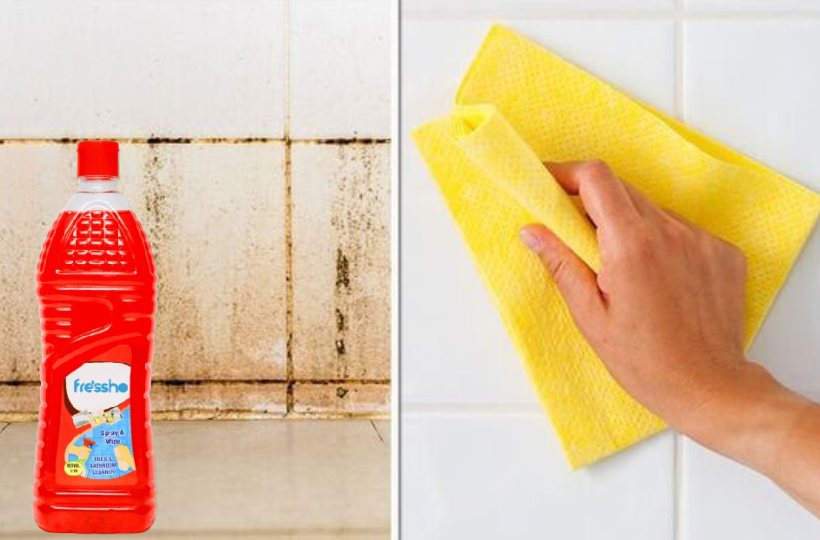Bathroom Maintenance
How to Remove Hard Stains from Bathroom Tiles
Are you tired of scrubbing hard to remove the yellow stains from your bathroom tiles? You are not alone. As we frequently use the bathroom, minerals like calcium and magnesium in the borewell water get deposited on the tiles, forming hard stains over time. Another possible reason for those stains could be the soap scum. These stains not only affect the appearance of the tiles but can also lead to long-term damage if not cleaned properly.
Although there are natural cleaning agents available to remove the yellow stains on your bathroom tiles, you will need a powerful cleaning agent to make them odor-free & germ-free. However, using a strong cleaning agent with a high level of acidity can damage your tiles and release a strong, unbearable odor and heat in your bathroom.
So, you might be confused about how to remove the stains from the bathroom tiles without damaging them and keeping your bathroom odorless. To overcome this, buy Fressho Tiles and Bathroom Cleaner and see your bathroom tiles shining bright and smell fresh. This liquid will effortlessly remove the hard water stain from your bathroom tiles and leave the surface shiny and hygienic.
What Causes Hard Stains on Bathroom Tiles?
Bathroom tiles were built to withstand regular use. However, they accumulate stubborn stains over time. Understanding the cause behind these stains is important to prevent and remove them effectively.
Time and Neglect: Frequent use of soap, water, and cleaning products is unavoidable on bathroom tiles. However, regular exposure to these substances will make the tiles dull and leave stains over time.
Hard Water Deposits: Hard water is a significant contributor to stains on bathroom tiles. It contains minerals like calcium, magnesium, and sometimes iron. When water evaporates, these minerals are left behind, forming unsightly white, gray, or brown stains on your tiles.
Limescale Build-Up: Limescale is a chalky deposit formed when hard water dries and leaves behind calcium carbonate. If you do not treat this deposit, it will give your bathroom tiles a rough texture and destroy the grout.
Soap Scum and Bathing Products: The products you use while showering, such as soaps, shampoos, and conditioners, often contribute to staining. These products combine with the minerals in hard water, creating a layer of soap scum on your tiles. This layer not only attracts dirt but also leads to discoloration. Over time, these deposits can give your bathroom tiles a dull or yellowish tint.
Mold and Mildew: Mold and Mildew are fungi that usually grow in moist areas. As bathroom tiles are often wet and warm, these fungi will start growing easily, particularly in the grout lines between tiles. Their presence not only leads to black, red, or green stains but can also affect your health by polluting the air with mold spores.
Improper Cleaning Products: Using harsh or inappropriate cleaning products can further damage bathroom tiles. Cleaners with high acidity, like vinegar or lemon juice, are often used to remove hard water stains but may harm porous materials such as grout and certain tiles. These products strip protective coatings, causing the tiles to absorb dirt more easily and develop additional stains.
How to Remove Bathroom Tile Stain Using Fressho Liquid
Fressho’s powerful Tile and bathroom cleaner removes tough stains and grime. Here are the directions to use.
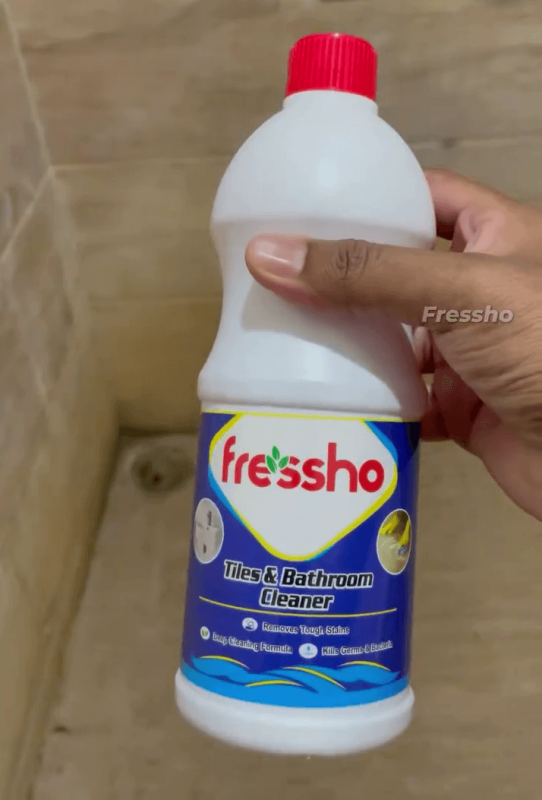
1. Spray the Fressho’s Tiles and Bathroom Cleaner directly on your dry bathroom tiles. Let it soak for a few minutes.

2. Gently scrub the tiles using a brush or sponge. You can clearly see the stain removed from your bathroom tiles.
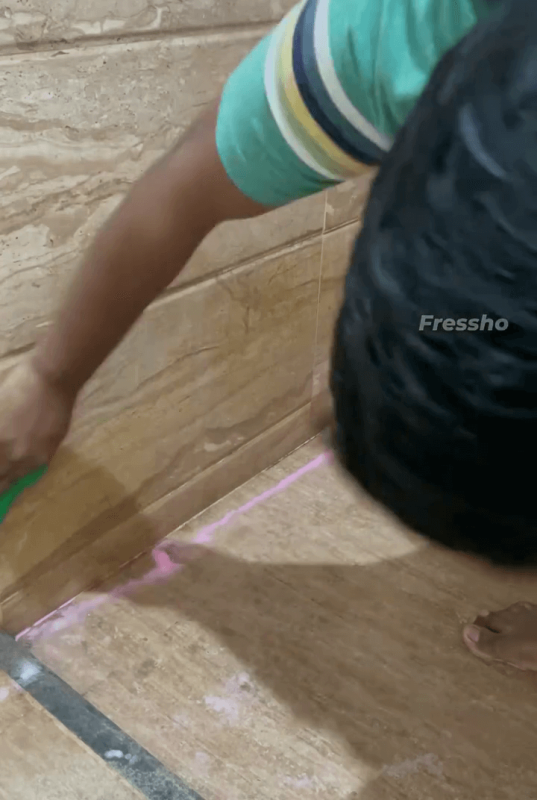
3. Rinse the tiles using clean water.
4. Dry the titles and grout on the wall with a dry cloth.
5. Now, you can clearly see the difference between the uncleaned tiles and the shiny tiles that are cleaned with Fressho Tiles and Bathroom Cleaner.


Alternative Ways to Remove Stains from the Bathroom Tiles
Like Fressho liquid, the natural cleaning agents listed below will also help you remove the stains from your bathroom tiles. However, using the natural agents could be a long process and will not produce a sparking clean on your tiles. Also, based on the hardness of the stains, you can combine different agents to clean the tiles. Always follow the manufacturer’s instructions carefully and use protective gloves when handling stronger chemicals.
1. Removing General Stains from Tiles
To start cleaning your bathroom tiles, it’s best to use a mild cleaner or natural ingredients that won’t harm the surface. Vinegar works well for removing soap scum, mild stains, and even some forms of mildew. For tougher stains, baking soda is an excellent option because it cleans the stains without damaging the tile surface.
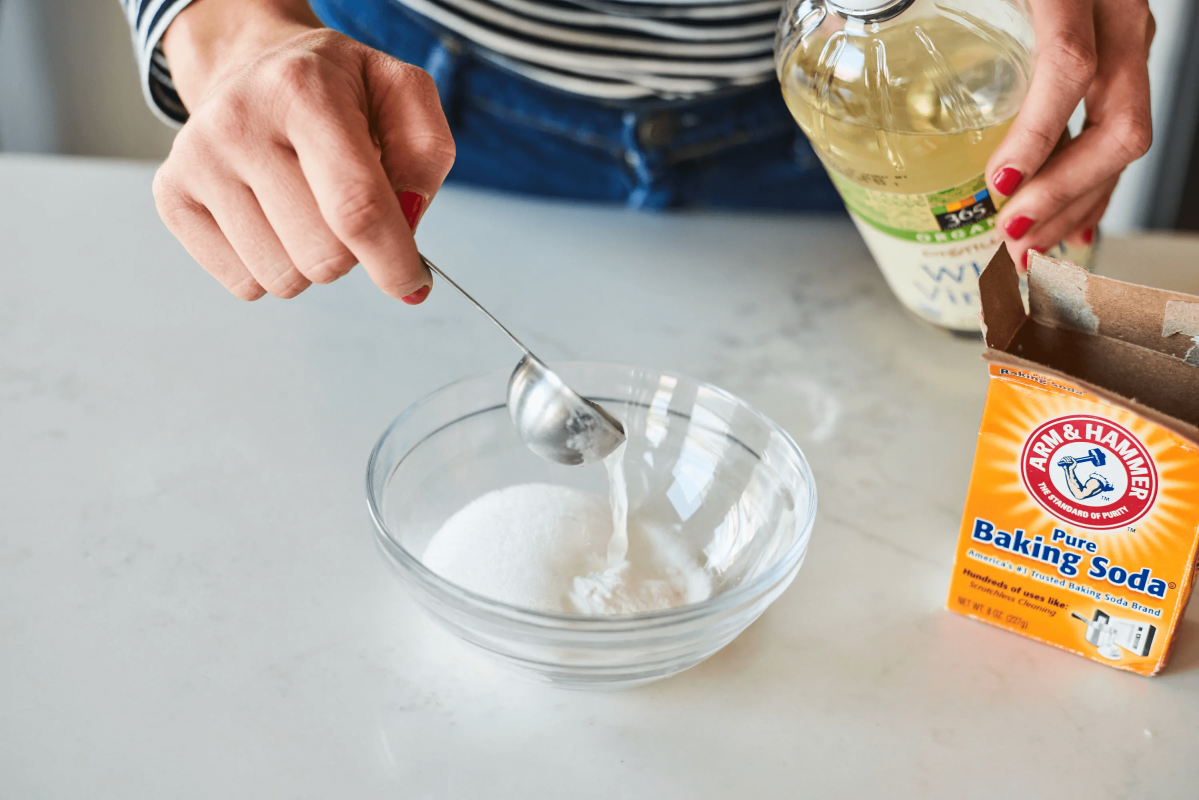
2. Removing Hard Water Stains
Hard water stains are caused by mineral deposits from water. These stains can be treated with natural cleaning agents with higher levels of acidity, such as lemon, vinegar, and baking soda.
Warning! Use lemon, vinegar, and baking soda only if there are hard stains on your bathroom tiles, as their acidic nature will damage the polished surface of your tiles.
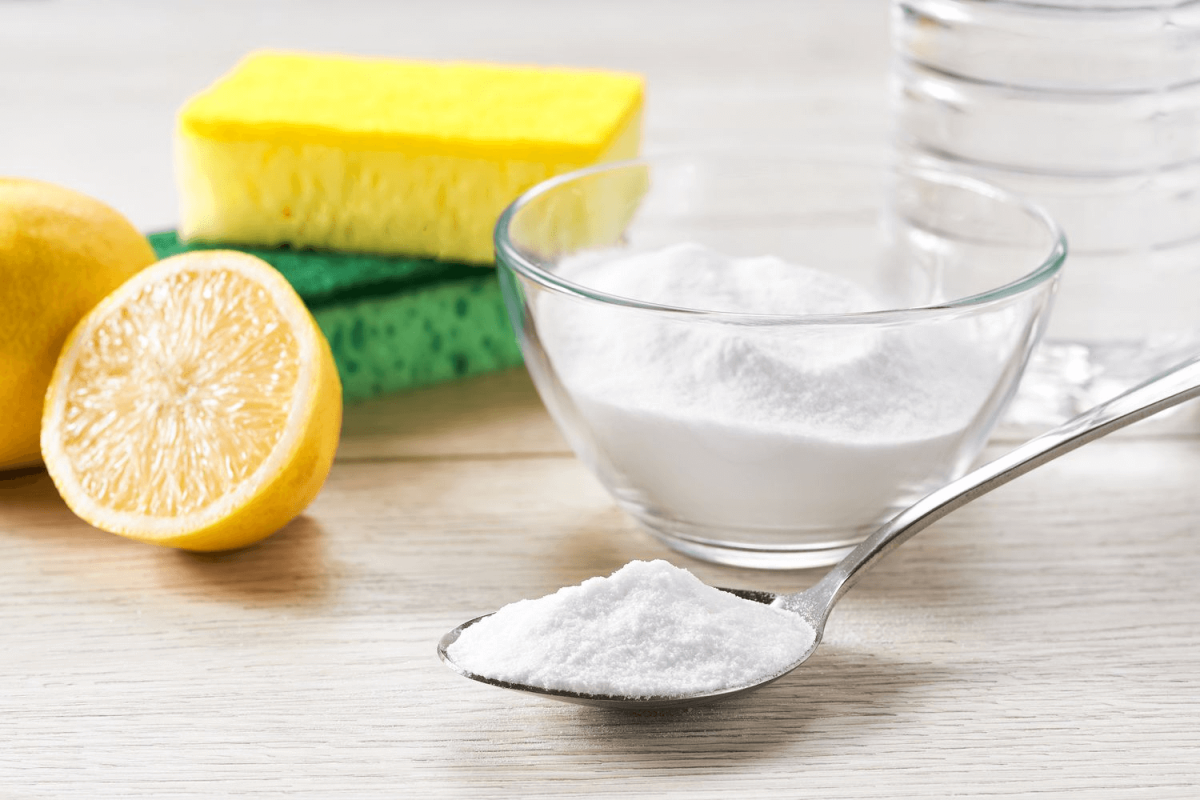
3. Dealing with Mold and Mildew
If you notice black spots or dark stains on your tiles, they likely have mold. To remove mildew, use the vinegar and baking soda method. For stronger mold growth, apply hydrogen peroxide directly to the tiles and rinse them with water.
4. Removing Rust Stains
Rust stains may form if metal objects like shaving cream cans are left on wet tiles for long periods. Use lemon juice and borax in an equal portion to remove the rust stains.
5. Cleaning Grout Between Tiles
Grout is often more porous than tiles and tends to absorb dirt easily, causing it to become discolored. To tackle mild stains, use a paste made of baking soda. Vinegar could be effective for harder stains.
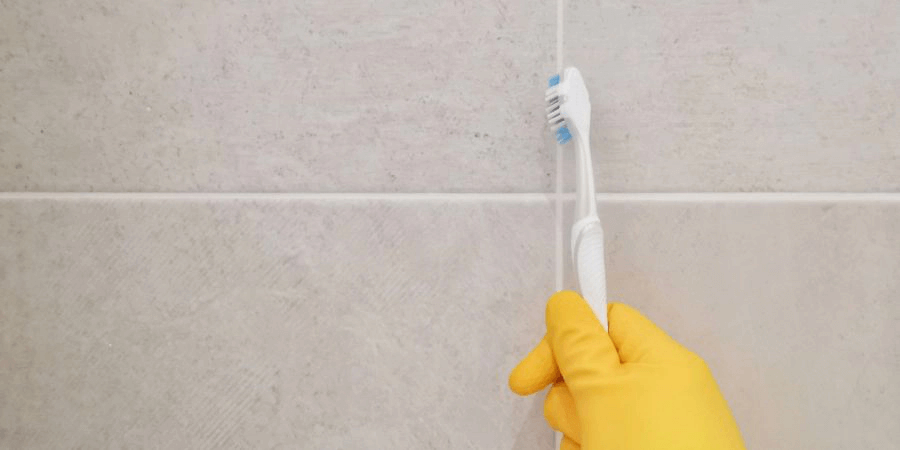
6. Removing Yellow Stains
Yellow stains can develop from hard water or improper cleaning over time, leaving an unsightly appearance on tiles. Use a mild bleach solution for tougher yellow stains. Be cautious with bleach, as it may damage surfaces and affect the air quality, so make sure the area is well-ventilated. Wear a mask while cleaning with bleach so that you do not inhale the smoke.
Bringing Back the Shine
Restoring your bathroom tiles to their original shine is easier with the right approach. Whether you rely on the power of Fressho Liquid Cleaner or simple DIY solutions, removing even the most stubborn stains becomes manageable. Once your tiles are stain-free, maintaining them is easy. After every shower, use a squeegee or dry cloth to wipe down tiles and remove water. The secret lies in consistency. It is advisable to clean bathroom tiles once or twice a week to keep them fresh and clean.

